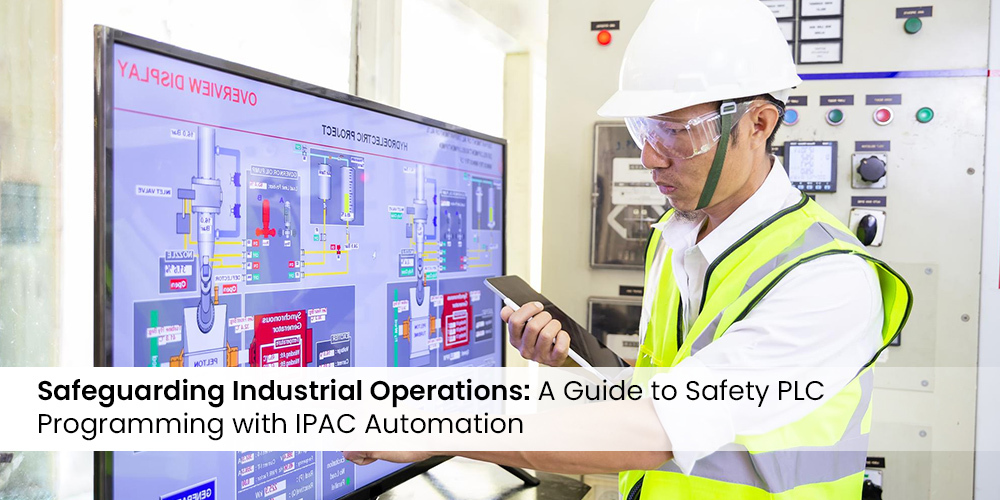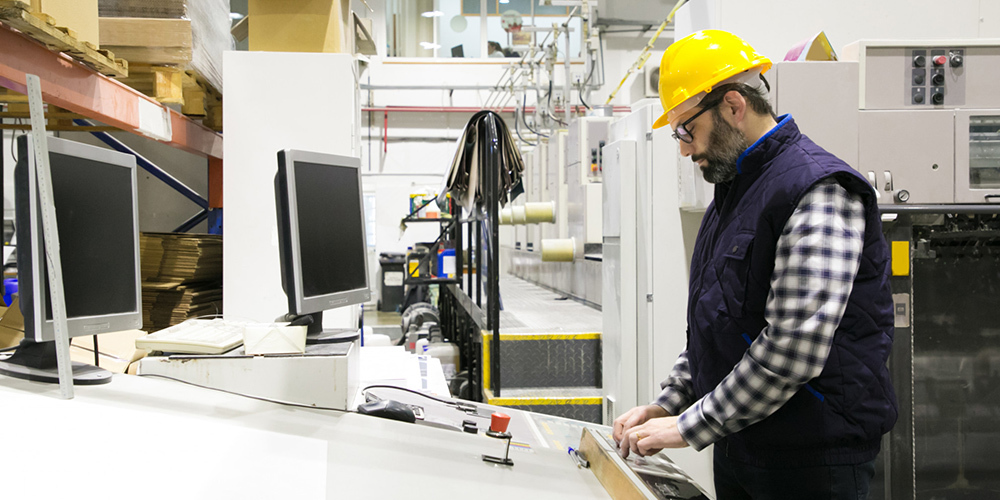Safeguarding Industrial Operations: A Guide to Safety PLC Programming with IPAC Automation
- March 26, 2024
- Posted by: Waman Sanap
- Category: Knowledge Hub

Introduction
In today’s fast-paced production environment, it is necessary to safeguard both employee and equipment security. PLCs, or safety programmable logic controllers, are now essential for building safety systems that reduce risks as well as safeguard against possible hazards in manufacturing environments. This comprehensive regard will cover the fundamental principles of safety PLC programming while simultaneously offering insights, best practices, and helpful information for IPAC Automation experts on how to construct and execute successful safety systems.
Understanding Safety PLC Programming
Safety PLCs are specially designed controllers designed to carry out safety-related control obligations and safety-critical operations. When compared with conventional PLCs, safety PLCs follow stringent security standards, such IEC 61508 and IEC 61511, and have been fitted with fail-safe mechanisms, built-in redundancy, and self-monitoring features that ensure reliable performance in hazardous circumstances.
Importance of Safety Systems in Industrial Environments
The industrial environment may become hazardous due to a variety of factors, such as human error, process deviations, and machinery failures, which can lead to injuries, accidents, or equipment damage. Safety PLC programming, when used to implement safety systems, helps identify potential dangers, lower risks, and protect people, property, and the environment.
Designing Safety Systems with Safety PLCs
1. Hazard Analysis and Risk Assessment (HARA)
To identify possible hazards and analyze their severity and likelihood, and determine the best methods for reducing them, perform a thorough hazards analysis and risk assessment in advance of establishing a safety system. This provides a foundation for developing safety standards and selecting appropriate security features.
2. Safety Functions and Logic Design
Define safety functions that are consistent with the identified hazards and requirements. Implementing safety PLC programming languages like Sequential Function Chart (SFC), Ladder Logic (LD), and Function Block Diagram (FBD) to implement safety logic will ensure that safety interlocking components and control sequences can be illustrated in a comprehensible and easy-to-understand manner.
3. Safety Hardware Selection
Consider safety-rated equipment that are fully interoperable with the safety PLC system, such as safety sensors, actuators, and input/output modules. To ensure dependability and performance in safety-critical applications, make sure that safety hardware complies applicable safety standards and certification requirements.
4. Redundancy and Fault Tolerance
Enhance availability and dependability of the safety system by implementing it with redundancy and fault-tolerant features. Utilize redundancy PLCs, dual-channel safety inputs and outputs, and alternative signal pathways in order to minimize single points of breakdown and ensure without interruption functioning in the event of a component failure.
5. Safety Validation and Verification
Professionally evaluate and verify the safety system design utilizing rigorous testing, simulation, and validation methodologies. Conduct functional safety assessments in order to confirm compliance with safety standards and regulatory requirements. These evaluations might involve failure mode and effect analysis (FMEA) and Safety Integrity Level (SIL) verification.
Advantages of Safety PLC Programming for IPAC Automation
Safety PLC programming offers several benefits for IPAC Automation applications, including:
1. Enhanced Safety: Implementing safety PLCs allows for preventive risk management and ensuring compliance with safety rules and regulations, thereby lowering the possibility of accidents and enhancing overall safety performance.
2. Flexibility and Scalability: Safety PLCs offer scalability that permits subsequent growth or modifications without sacrificing safety integrity, as well as adaptability to adapt safety functions to evolving operating requirements.
3. Integration with Control Systems: Safety PLCs interact seamlessly with existing control systems, which permits coordinated operation for both safety and non-safety functions from the same platform, streamlining system architecture and minimizing implementation complexity.
4. Diagnostic Capabilities: Safety PLCs involve advanced diagnostic capabilities that enable real-time monitoring of safety system status, recognizing faults or irregularities, and quick response to possible safety concerns, hence improving system dependability and maintainability.
Conclusion
Safety PLC programming enables the establishment of robust safety systems for industrial contexts, protecting the safety of individuals, equipment, and assets against possible hazards. IPAC Automation professionals can establish safety systems that far exceed severe safety standards, increase efficiency in operations, and promote a more secure work environment for everyone involved by following best practices and utilizing the capabilities of safety PLCs.
At IPAC Automation, we’re professionals in providing comprehensive options for automation and safety PLC programming. Get in touch with us right now to find out more about our offerings and how we can help you protect your industrial processes.

Waman Sanap is the CEO of iPAC Automation, a leading instrumentation and control automation company. He has 20+ years of experience in the instrumentation engineering field.

